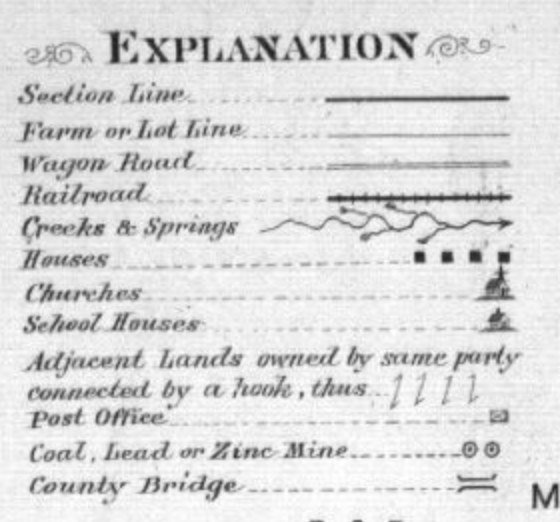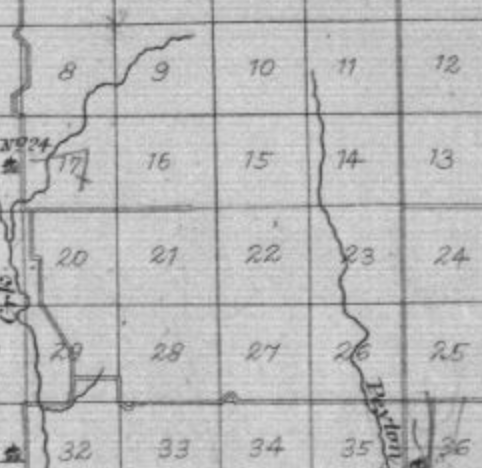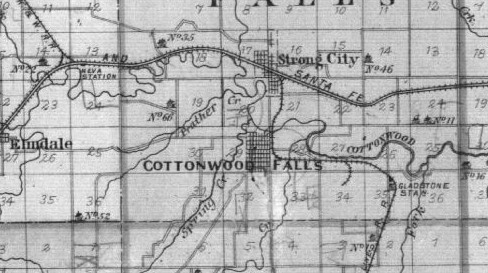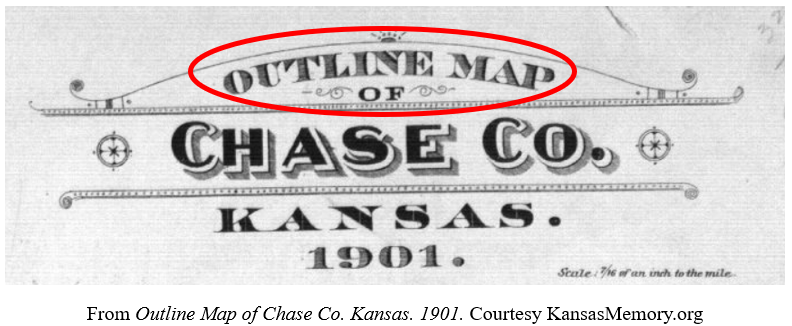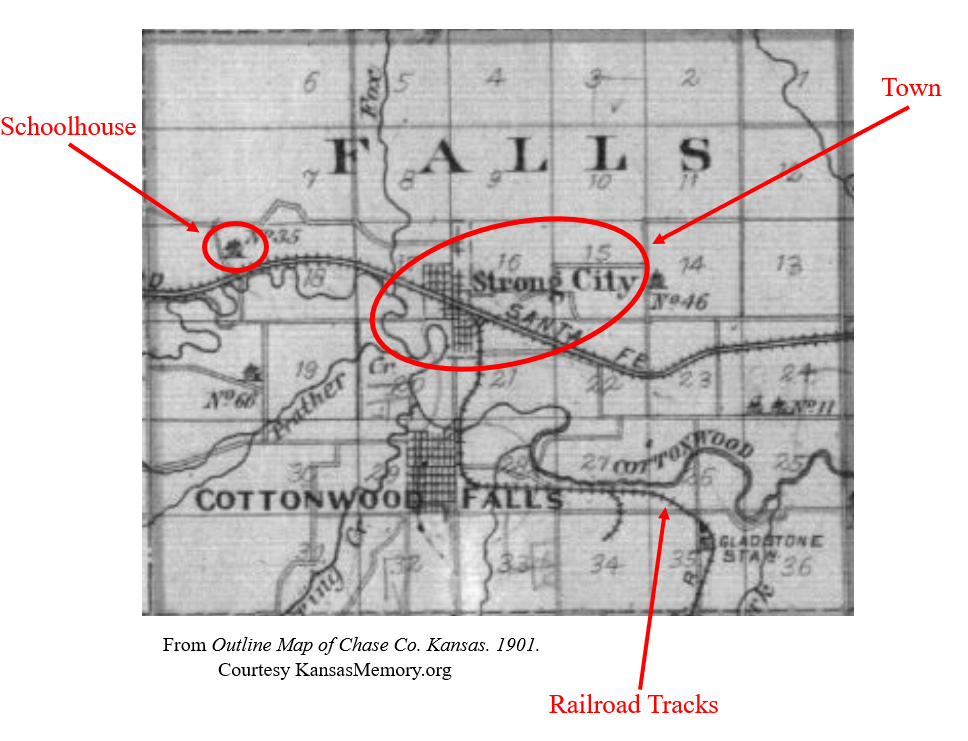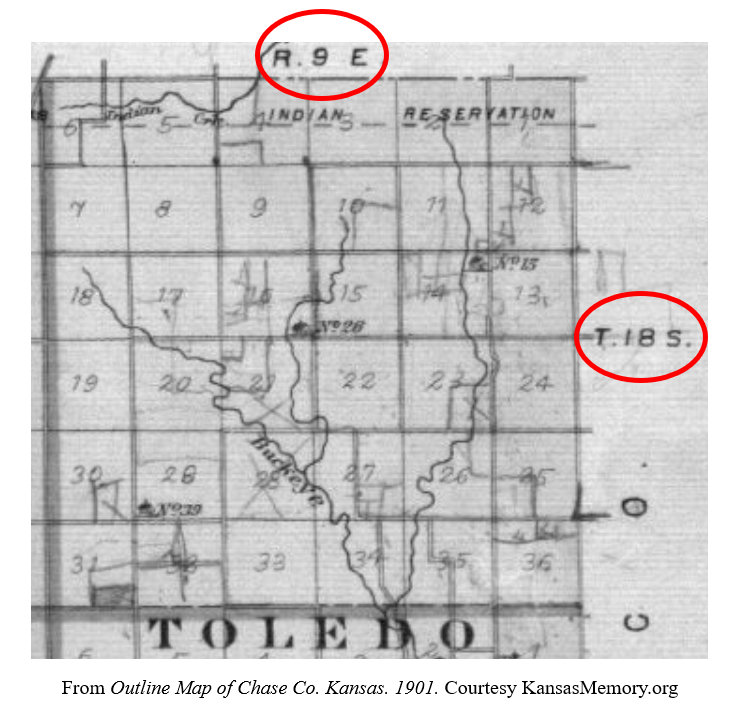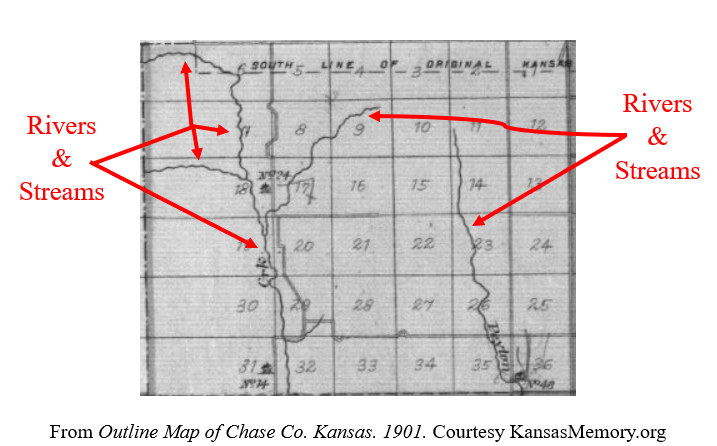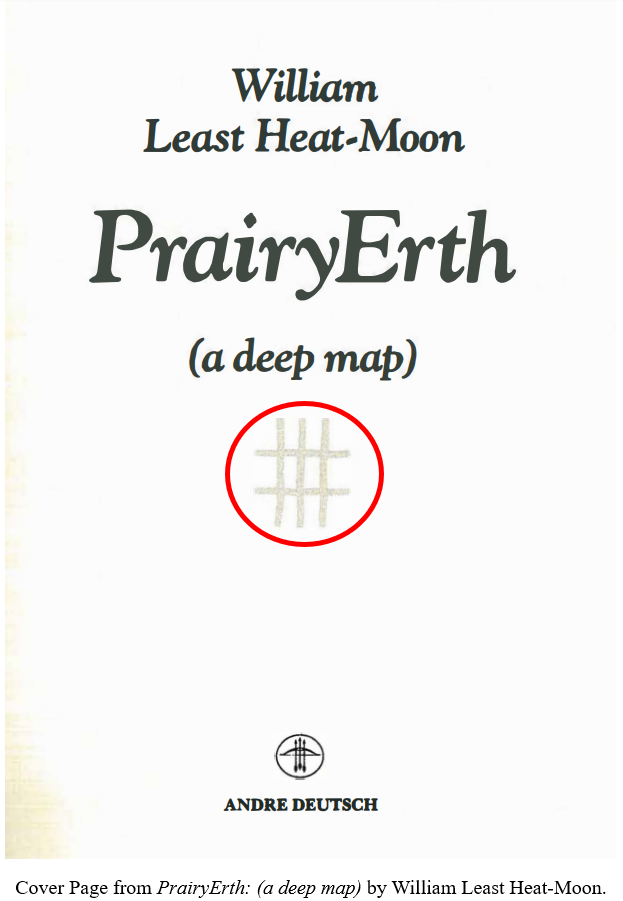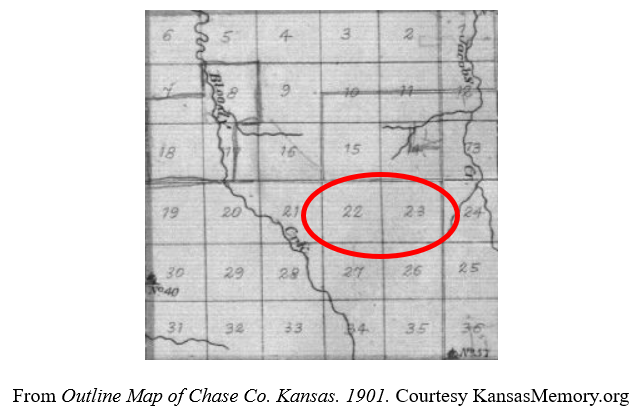This plat map of Chase County, Kansas shows different areas of land mapped out in almost all identically sized plots of land, based on latitude and longitude. If you were to go one and view all the maps in this collection you would find how this cartography set up different towns, which are not all identical in land plots, but varying sizes based on who owns the land.
This plat map contains many silences in the environment that is being mapped for example the Flint Hills encompass Chase County and therefore more topography elements than just creeks and springs might be applicable to any type of mapping of this region. Instead, this map focuses more on man-made objects or concepts such as churches, lot lines, and mines, as shown on the symbols key, or “Explanations.”

Outline Map of Chase Co., Kansas. (Minneapolis: Northwest Publishing Co. 1901)
In the upper right-hand corner of this map, it is shown that it seems the “Warren Mortgagee Company” owns this map, they might not have been the creators of this map but did use it in some capacity. The silencing of the topography of this map would benefit a mortgage company in that prospective owners might not be aware of the type of plants and hills that occupy this land, as the Flint hills are relatively hard to cultivate. This information would surely deter a farmer from attempting to seek a mortgage company’s help.
William Least Heat-Moon wrote in PrairyErth, ” Maybe a grid was the answer: arbitrary quadrangles that have nothing inherently to do with the land,”, Heat-Moon is contemplating how we could possibly accurately represent the land, how we should represent the land. How could we communicate a location based solely on natural landmarks? Still, a grid feels so disconnected from the land. Later in PrairyErth, Heat-Moon includes a parable about how differently a place could be represented.

William Least Heat-Moon, PrairyErth (Boston: Houghton Mifflin, 2001), p. 16.
As opposed to a grid-type of the map, Heat-Moon shows a Native American interpretation of the land as a moving breathing thing, that was the sum of all it represented, not just a seemingly 2-dimension object. That it in no way could be put into simple boxes and passed off as an unmoving entity,


